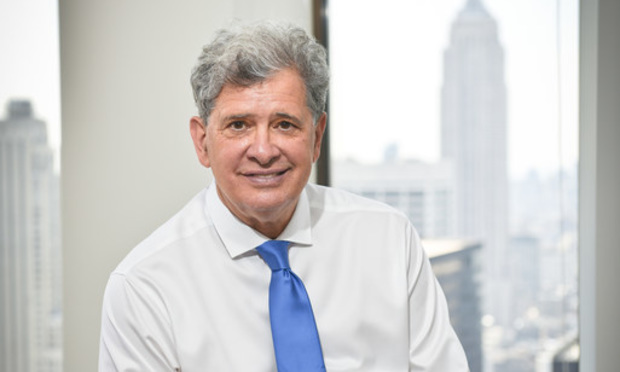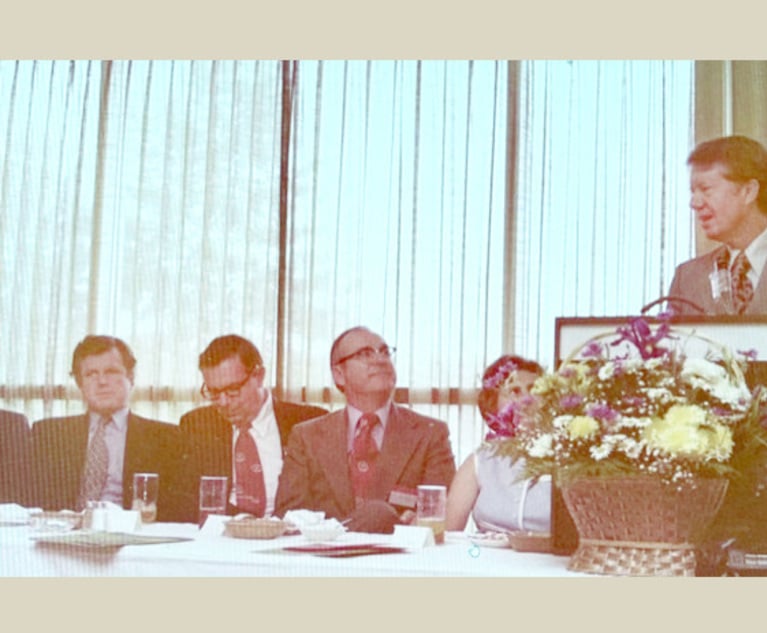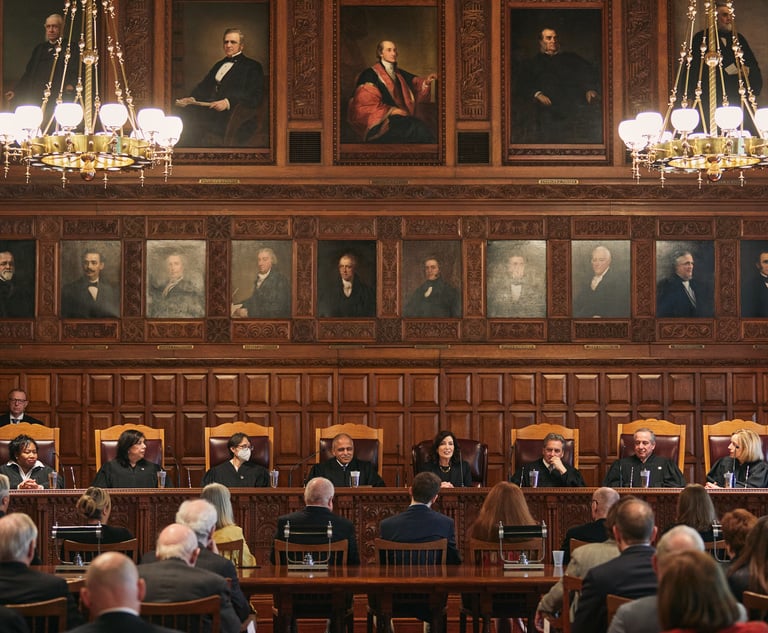Recent Ninth Circuit Decision Is Mind-Boggling
The Supreme Court's recent decision in 'Kernan v. Cuero' makes one wonder why the Court of Appeals for the Ninth Circuit makes itself such an easy target for its critics.
February 06, 2018 at 03:00 PM
5 minute read

The U.S. Supreme Court's recent decision in Kernan v. Cuero, 138 S.Ct. 4 (2017) makes one wonder why the Court of Appeals for the Ninth Circuit makes itself such an easy target for its critics.
In December 2005, Michael Daniel Cuero pled guilty in California state court to causing bodily injury while driving under the influence of methamphetamine and unlawfully possessing a firearm. Cuero's car had veered off the road and crashed into a bystander, causing severe injuries. The plea agreement promised a sentence of 14 1/3 years' imprisonment and was premised on the assumption that Cuero had one prior conviction. The day before sentencing, however, the prosecutor filed an “amendment,” advising the court that Cuero, in fact, had two prior convictions and was therefore subject to an indeterminate sentence of 64 years to life. (The probation office had discovered the additional strike in preparing its pre-sentence report.) The court then permitted Cuero to withdraw his plea, which he did. Subsequently, Cuero entered a new plea, in which he admitted his two prior convictions and was sentenced to 25 years to life.
On appeal, the California Court of Appeals rejected Cuero's claim that he was entitled to specific performance of the original plea agreement and upheld his sentence.
What followed was a federal habeas petition, which the District Court denied, and an appeal to the Ninth Circuit. A divided panel granted the writ, directing the state to resentence Cuero “in accordance with the original agreement.” Finding that Cuero “had performed his part of the agreement by pleading guilty,” the majority concluded that “fundamental fairness demands the state be compelled to adhere to the agreement as well.”
Judge Diarmuid O'Scannlain filed a vigorous dissent. As he noted, under the Antiterrorism and Effective Death Penalty Act of 1996 (AEDPA), the question for a federal habeas court is whether the state proceedings had “resulted in a decision that was contrary to, or involved, an unreasonable application of clearly established federal law, as determined by the Supreme Court of the United States.” 28 U.S.C. §2254(d)(1). The answer to that question, Judge O'Scannlain opined, was straightforward. In Santobello v. New York, 404 U.S. 257 (1971), decided in 1971, the Supreme Court held that it was left “to the discretion of the state court” whether the remedy for a breach of a plea agreement should be specific performance or withdrawal of the guilty plea. Specific performance was not required. If that was federal law “as determined by the Supreme Court,” then Cuero was not entitled to relief.
Not surprisingly, the state sought en banc review, which was denied. Seven judges dissented from the denial, writing that the decision to grant the writ “invit[ed] summary reversal by the Supreme Court.” They were right. On Nov. 6, 2017, the Supreme Court, in a summary opinion (without full briefing or argument), unanimously reversed the Ninth Circuit. The Supreme Court quoted from Santobello and noted that in Mabry v. Johnson, decided in 1984, it had observed that “Santobello expressly declined to hold that the Constitution compels specific performance of a broken prosecutorial promise” and that, “permitting Santobello to replead was within the range of constitutionally appropriate remedies.” 467 U.S. 504, 510-11 (1984). Hence, a federal habeas court could not say that federal law as interpreted by the Supreme Court clearly established that specific performance was constitutionally required. Indeed, just the opposite was true.
What does one make of Cuero? To be blunt, the Ninth Circuit's decision is mind-boggling. On my criminal procedure exam at Columbia Law School, I ask this question: Does Santobello require specific performance of a plea agreement in the event of a prosecutorial breach? A “yes” answer gets it wrong. It is not meant to be a hard question. And Mabry, which is the Supreme Court's last word on the subject, could not be clearer. (The Ninth Circuit dissenters quoted the relevant language from Mabry.) Only a court willfully blind to controlling law could reach the result that the Ninth Circuit did in Cuero.
No doubt the Ninth Circuit majority was motivated by two factors. One was its dislike of California's three strikes law, which has fueled mass incarceration. And two was its dislike of AEDPA, which imposes a highly deferential standard of habeas review on federal courts. But not liking the law is hardly a reason for not following it.
Cuero marks the 14th time in the last 12 years (since the beginning of the Roberts court) that the Ninth Circuit has been summarily reversed in a habeas case. Twelve of the 14 have been unanimous opinions. As Prof. Akhil Amar of Yale Law School has written, “when you're not picking up votes of anyone on the [Supreme] Court, something is screwy.” Akhil Amar, “Does the Supreme Court Hate the Ninth Circuit?,” Findlaw (April 19, 2002). Moreover, several of the Supreme Court's opinions include scolding language. In one, the court wrote that the Ninth Circuit's decision was “as inexplicable as it is unexplained.” Felkner v. Jackson, 562 U.S. 594 (2011). In another, it wrote that the Circuit had “profoundly misapprehend[ed]” the law. Johnson v. Lee, 136 S. Ct. 1802 (2016). And in a third, it wrote that “no fair‑minded jurist” could have reached the result that the Circuit had. Nevada v. Jackson, 569 U.S. 505 (2013). Cuero was gentle in comparison, but it was still a rebuke.
Cuero provides ready fodder for those who believe that the Ninth Circuit is heedless of the law. Why would a court do that to itself?
Paul Shechtman is a partner at Bracewell in New York and teaches evidence and criminal procedure at Columbia Law School.
This content has been archived. It is available through our partners, LexisNexis® and Bloomberg Law.
To view this content, please continue to their sites.
Not a Lexis Subscriber?
Subscribe Now
Not a Bloomberg Law Subscriber?
Subscribe Now
NOT FOR REPRINT
© 2025 ALM Global, LLC, All Rights Reserved. Request academic re-use from www.copyright.com. All other uses, submit a request to [email protected]. For more information visit Asset & Logo Licensing.
You Might Like
View All
Jimmy Carter’s 1974 Law Day Speech: A Call for Lawyers to Do the Public Good
14 minute readTrending Stories
- 1Stevens & Lee Names New Delaware Shareholder
- 2U.S. Supreme Court Denies Trump Effort to Halt Sentencing
- 3From CLO to President: Kevin Boon Takes the Helm at Mysten Labs
- 4How Law Schools Fared on California's July 2024 Bar Exam
- 5'Discordant Dots': Why Phila. Zantac Judge Rejected Bid for His Recusal
Who Got The Work
Michael G. Bongiorno, Andrew Scott Dulberg and Elizabeth E. Driscoll from Wilmer Cutler Pickering Hale and Dorr have stepped in to represent Symbotic Inc., an A.I.-enabled technology platform that focuses on increasing supply chain efficiency, and other defendants in a pending shareholder derivative lawsuit. The case, filed Oct. 2 in Massachusetts District Court by the Brown Law Firm on behalf of Stephen Austen, accuses certain officers and directors of misleading investors in regard to Symbotic's potential for margin growth by failing to disclose that the company was not equipped to timely deploy its systems or manage expenses through project delays. The case, assigned to U.S. District Judge Nathaniel M. Gorton, is 1:24-cv-12522, Austen v. Cohen et al.
Who Got The Work
Edmund Polubinski and Marie Killmond of Davis Polk & Wardwell have entered appearances for data platform software development company MongoDB and other defendants in a pending shareholder derivative lawsuit. The action, filed Oct. 7 in New York Southern District Court by the Brown Law Firm, accuses the company's directors and/or officers of falsely expressing confidence in the company’s restructuring of its sales incentive plan and downplaying the severity of decreases in its upfront commitments. The case is 1:24-cv-07594, Roy v. Ittycheria et al.
Who Got The Work
Amy O. Bruchs and Kurt F. Ellison of Michael Best & Friedrich have entered appearances for Epic Systems Corp. in a pending employment discrimination lawsuit. The suit was filed Sept. 7 in Wisconsin Western District Court by Levine Eisberner LLC and Siri & Glimstad on behalf of a project manager who claims that he was wrongfully terminated after applying for a religious exemption to the defendant's COVID-19 vaccine mandate. The case, assigned to U.S. Magistrate Judge Anita Marie Boor, is 3:24-cv-00630, Secker, Nathan v. Epic Systems Corporation.
Who Got The Work
David X. Sullivan, Thomas J. Finn and Gregory A. Hall from McCarter & English have entered appearances for Sunrun Installation Services in a pending civil rights lawsuit. The complaint was filed Sept. 4 in Connecticut District Court by attorney Robert M. Berke on behalf of former employee George Edward Steins, who was arrested and charged with employing an unregistered home improvement salesperson. The complaint alleges that had Sunrun informed the Connecticut Department of Consumer Protection that the plaintiff's employment had ended in 2017 and that he no longer held Sunrun's home improvement contractor license, he would not have been hit with charges, which were dismissed in May 2024. The case, assigned to U.S. District Judge Jeffrey A. Meyer, is 3:24-cv-01423, Steins v. Sunrun, Inc. et al.
Who Got The Work
Greenberg Traurig shareholder Joshua L. Raskin has entered an appearance for boohoo.com UK Ltd. in a pending patent infringement lawsuit. The suit, filed Sept. 3 in Texas Eastern District Court by Rozier Hardt McDonough on behalf of Alto Dynamics, asserts five patents related to an online shopping platform. The case, assigned to U.S. District Judge Rodney Gilstrap, is 2:24-cv-00719, Alto Dynamics, LLC v. boohoo.com UK Limited.
Featured Firms
Law Offices of Gary Martin Hays & Associates, P.C.
(470) 294-1674
Law Offices of Mark E. Salomone
(857) 444-6468
Smith & Hassler
(713) 739-1250









